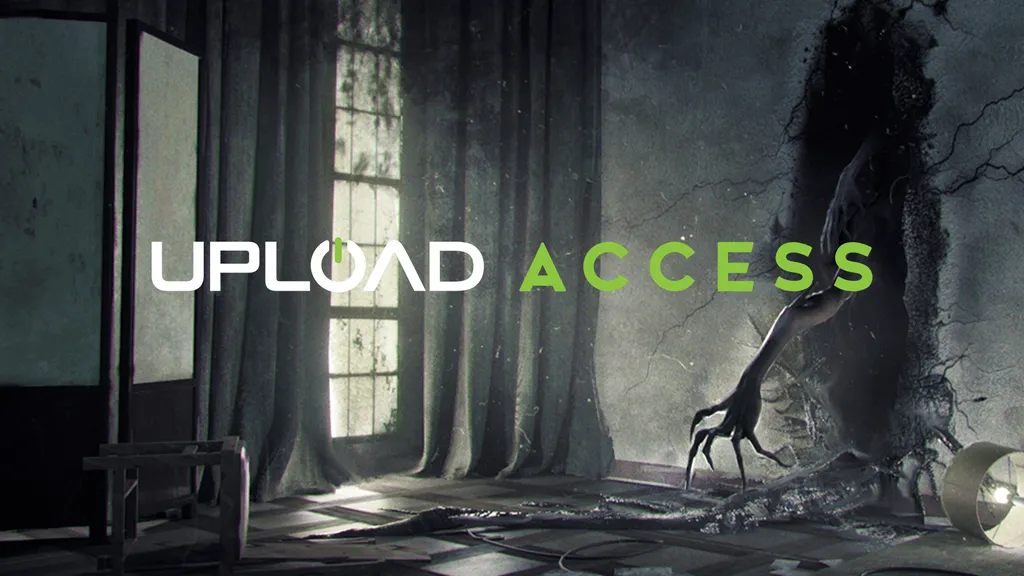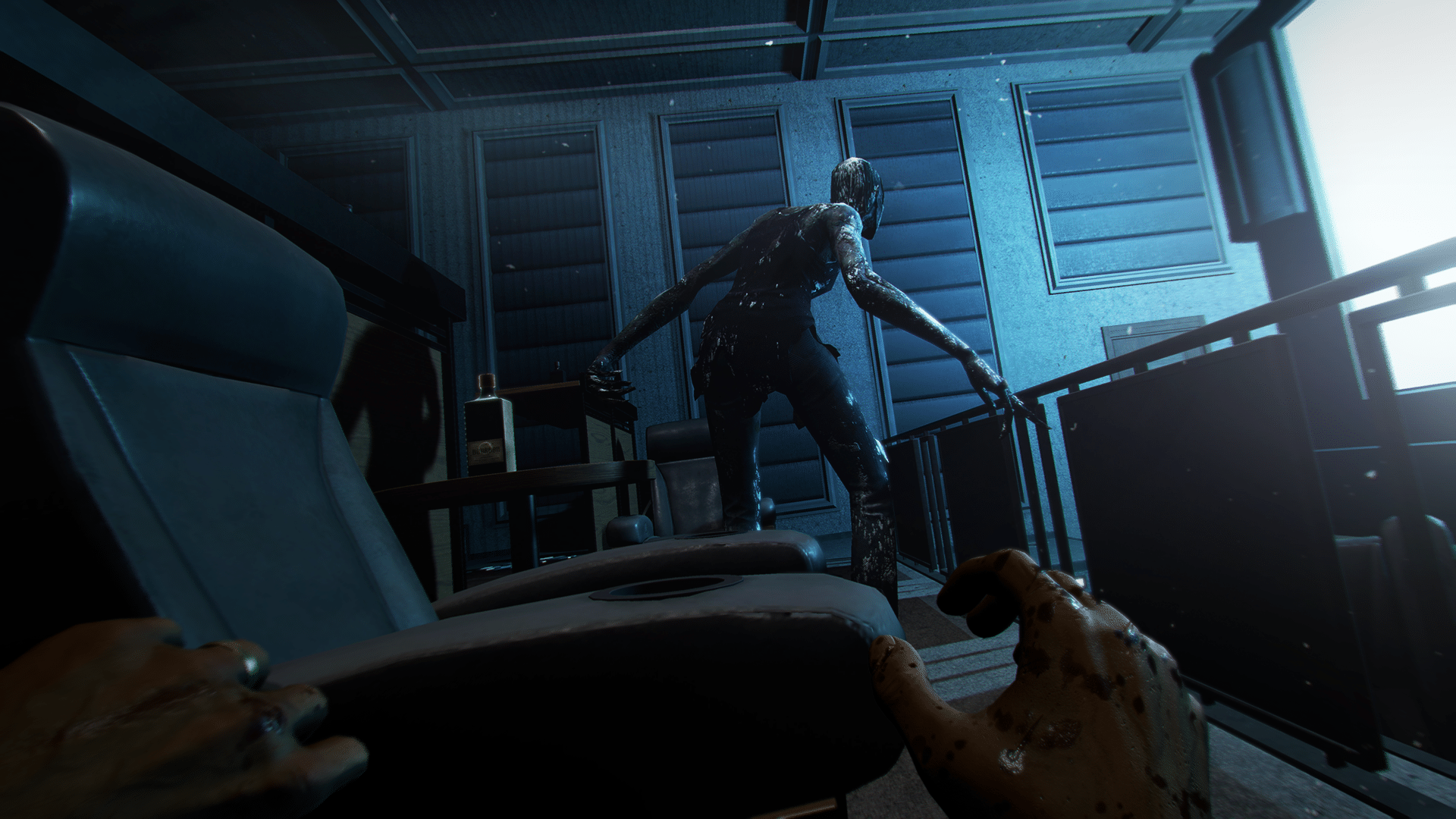I would say fear not, but I suppose that sort of defeats the point; Wraith: The Oblivion – Afterlife will be a scary VR game.
I’ve played it and I can attest to that. But Fast Travel Games — better known for the decidedly less terrifying efforts of Apex Construct and The Curious Tale Of The Stolen Pets — is going for something a little different than your usual shock-fest with its horror debut. The Stockholm-based team wants to make a full, multi-hour campaign people will actually play. Wraith won’t be a VR dare akin to Face Your Fears – something you might pluck up the courage to play and then rip off of your face moments later. Wraith is a slower, moodier alternative.
“If shock and jump scares is all you rely on, it won’t be much of a lasting experience,” Creative Director Erik Odeldahl tells me, acknowledging that the games that do go for that do it very well. “It’ll be something you try it out, you show it to your friends, they get scared, you all laugh etc. And that’s a great thing. That’s not necessarily what we’ve been going for. We wanted to create a longer game, a full game with a full narrative and a lot of exploration and hopefully some really, really scary setpieces.”
It’s rare for a developer to show this much constraint when talking about the horror aspect of a game. So many scary VR titles are inspired by — if not outright based on — modern horror hits like the door-slamming antics of the Paranormal Activity series. The screams they result in make for great marketing points.
Wraith’s inspirations, however, are slightly different. Odeldahl himself is a horror fanatic that fondly recalls “collecting crappy VHS tapes” when he was younger
“I would say it does channel a lot of the slower, moody earlier horror movies like The Changeling with George C. Scott or The Haunting from 1963, these really creepy, moody pieces. Once you start developing for VR and horror for VR, all of those things change a lot when it comes into a game. But I think it’s certainly building on a strong horror tradition from both movies and games.”
Wraith takes these unfamiliar influences very literally. The game even roots its narrative in the seedy heart of Hollywood with its decedent mansion and cast of uptight, self-interested characters that have met an uncertain but undoubtedly unpleasant fate. Their stamp is most evident in the game’s approach to scares, though.
“I think what these movies did is they build a tension and they earn their scares,” Odeldahl explains. “And I think that’s been a mantra for us. We have to earn our scares, let’s build up to something. It might take some time but once you hit a certain level it becomes really scary and you basically never really dip down too much from that level. We want the play to be tense all the time.”
So, yes, you will jump. There will be moments of unexpected surprise either, scripted or in encounters with the game’s ghoulish enemies, the Spectres. But Wraith wants to sustain that terror without letting it evaporate in a heat-of-the-moment explosion. To pull that off, Odeldahl says, the player needs to be vulnerable. Spectres, for example, can’t be defeated, leaving hiding and distractions as your only options. The pillars you’ll take cover behind? Those are the core pillars of the game itself.
“I think, putting the player in those situations — hide behind that couch or stay perfectly still behind that pillar, because otherwise the spectre will see you — that’s the first thing we did actually, for the game. Before we nailed down art etc, we did a proof of concept. “Okay can we create an experience where the player has to hide. And it has to be super exciting, super scary and etc” and I think we’ve done that really well.”
The cluttered halls and dimly-lit corridors of Barclay Mansion itself, then, are key player in maintaining the suspense of Wraith. To Oddeldahl and team, it was crucial that this building felt “real” and not simply there to serve the player. Yes, there are closets to hide in and desks to duck under, but they won’t always be where you need them.
“We think a lot about negative space, the places in Barclay Mansion where you cannot hide,” the developer explains. “Where you’re completely– there’s 15 – 20 meters, you have to cross, there’s nowhere to hide, you know there’s a Spectre nearby. So, yes, every location, every room in the Barclay Mansion is very much considered. Every room is a stealth space, it’s built for gameplay.”
If all of this sounds a little overwhelming to you, I have to say I don’t really blame you. Horror is something I really struggle with in VR – I genuinely didn’t know how loud I could scream until I played Resident Evil 7. But, based on the first hour at least, Fast Travel is delivering on its goal of keeping the player tense while perhaps instilling just enough confidence to take that next step. Spectre encounters are creepy but manageable and the handful of sudden jumps are designed more to unnerve more than they are terrify. It’s a delicate balance, and one Odeldahl admits might not always be maintained.
“Horror isn’t for everyone and we’re definitely not half-assing the horror aspect I hope,” he says. “But I do think that, just like there are awesome romantic comedies, but all romantic comedies aren’t for everyone, there are also awesome horror games, but all horror games are not for everyone. I want to basically encourage people to try this game – I do hope they find it really, really scary but I do hope that they find more than that as well. It’s definitely not a power fantasy. A lot of games are power fantasies, this is not.”
But, crucially, there’s more to Wraith than it’s isolated moments of terror. There’s the mystery at the center of the narrative, which asks players to find out why and how they transitioned into the afterlife, and there’s also some promising foundations for a layered stealth game that not only embraces physicality but also the supernatural elements of the World of Darkness universe, allowing you to make quick escapes between walls or manipulate objects to create distractions. It’s that substance, Odeldahl hopes, that will see any Wraith player, brave soul or otherwise, through The Oblivion: “I think that part along with a hopefully gripping narrative is something that a lot of players that might not think they are horror fans will appreciate.”
























